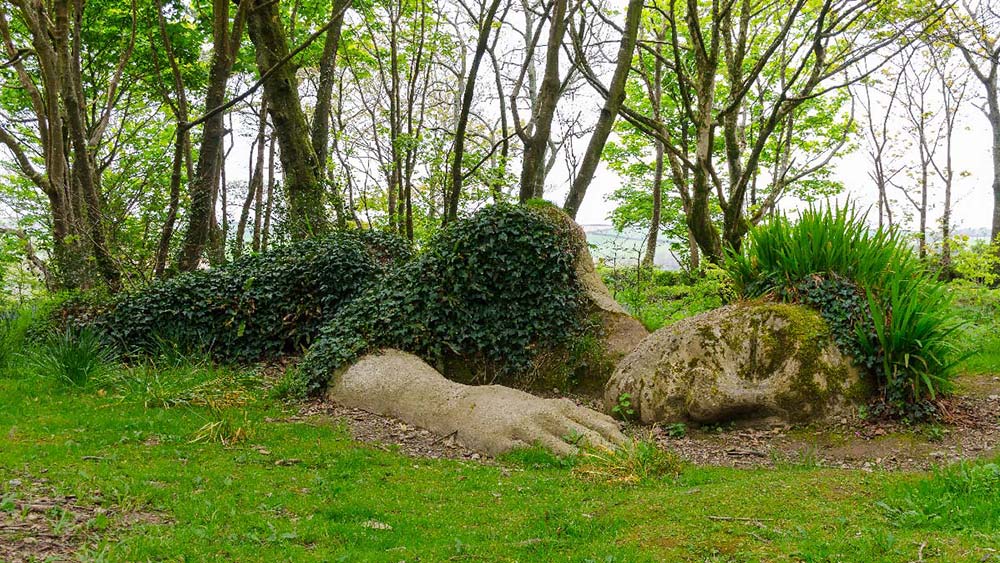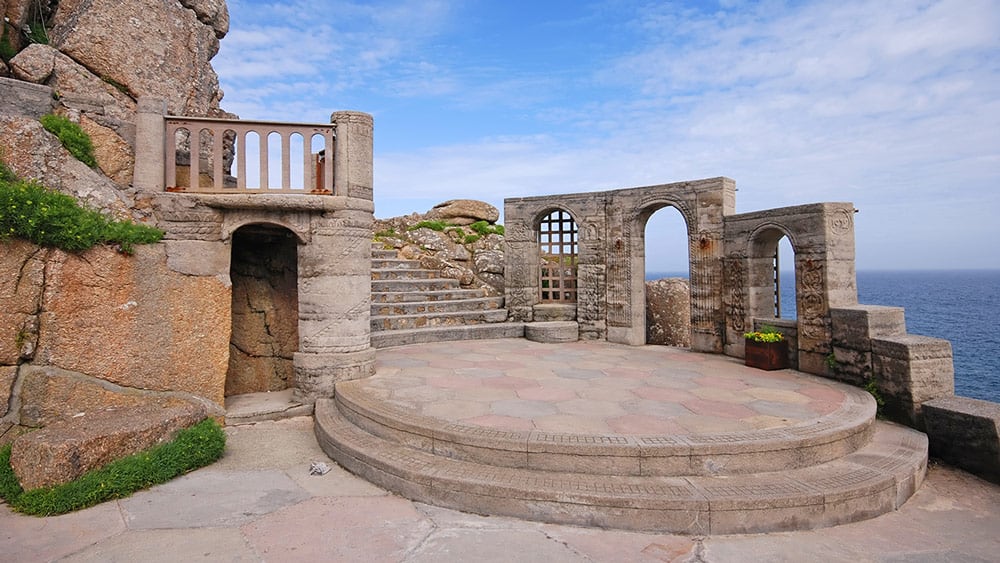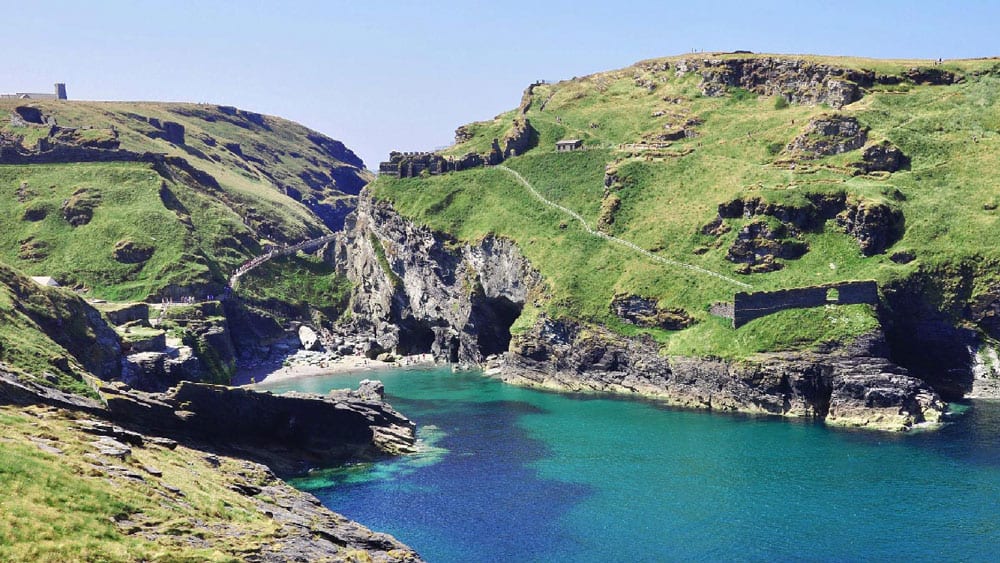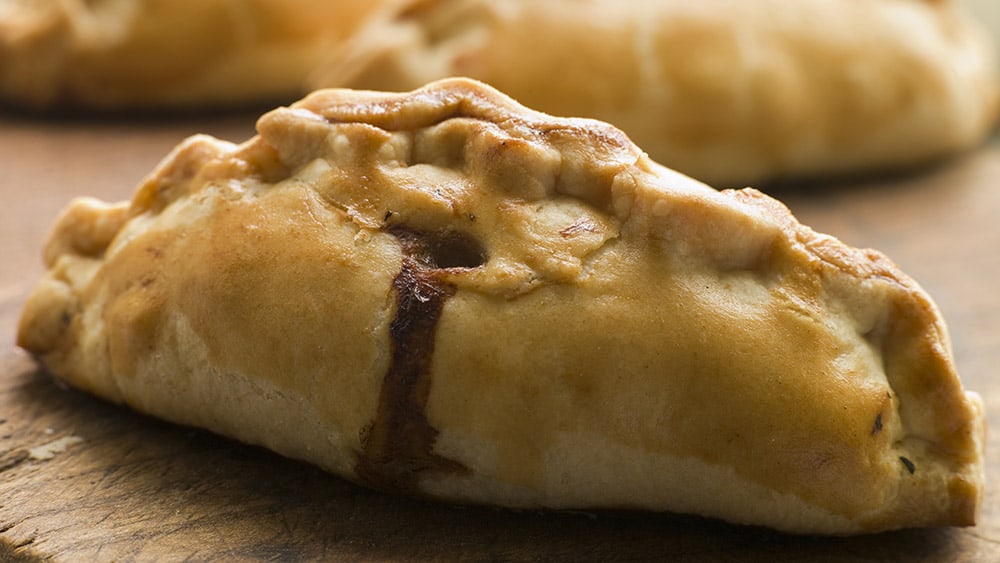10 Unusual Things to Do in Cornwall
Cornwall’s Most Unusual Bucket List
Down here in the West Country we’re well-known for our charming oddities and endearing peculiarities, so it will come as no surprise that some of the region’s most popular attractions are also a little bit on the ‘kookie’ side.
For all those of you who love a holiday experience that’s out of the ordinary, here’s an unusual bucket list of weird, wild and wonderful things to see and do in the beautiful and southern-most county of Cornwall…
Adrenalin Quarry, Liskeard
Let’s start with Cornwall’s most high-flying, wet and wild adventure park. Set in a flooded quarry near the historic village of Menheniot, Adrenalin Quarry is a daredevil’s paradise where you can take on a colossal inflatable playground full of jumbo-sized trampolines, monkey bars, slides and swings, plus your guaranteed share of dramatic splashdowns and wipeouts! Dizzying heights await all those brave enough to let loose upon the 490 metre long zip wire and the gravity defying ‘Giant Swing’, and if that’s not enough to satisfy your adrenals, you can strap yourselves into a go-kart and burn some rubber on the 800 metre all-weather track, or, chance your arm with the ancient art of axe throwing under expert guidance and supervision.
Lost Gardens of Heligan
It’s one of Britain’s most mysterious and romantic secret gardens, lost to the undergrowth for decades before being lovingly restored to former glories. The chance discovery of an etching in the garden walls that read ‘Don’t come here to sleep or slumber’ became the overarching moto behind the estate’s renaissance. When you visit these award-winning gardens, you can roam more than 200 acres, exploring a variety of landscapes; from the Victorian growing gardens and pleasure grounds to the bamboo tunnels of the sub-tropical jungles flourished by tree ferns, giant rhubarb and banana plants. Venture further to enjoy peaceful woodland and meadow strolls and see more of the rare breeds and wildlife that have made this enchanting valley their home. A truly blissful Cornish experience.

The Mermaid of Zennor
It’s one of Cornwall’s most recounted tales. Set in the timeless coastal parish of Zennor, it tells the story of a mysterious and very beautiful lady who would occasionally appear in the pews of Zennor Church dressed in luxuriant and exotic garb and sharing her sweetly sung tones and psalmodies. Just like the congregation were captivated by her presence, she became transfixed by the church choir’s most admirable chorister, Mathey Trewella. Legend has it that Mathey became so enchanted by his enigmatic female admirer that he secretly followed her along the cliffs of Penwith to Pendower Cove where she was heard singing beautifully from the rocky outcrops. Despite her attempts to keep him at bay, Mathey was so bewitched by her distant melodies he entered the salty water never to be seen again. Following his disappearance, sailors and fishermen would return from their trips with tales of a beautiful mermaid singing and basking in the turquoise seas off Pendower, and a man’s haunting lullaby carried on the Celtic mist, believed to be the wistful refrain of young Mathey Trewella in search of his love.
This famous story continues to attract visitors to Zennor, a pilgrimage that includes the 12th Century church of St Senara to see the ‘mermaid chair’; an exquisitely hand-carved medieval seat carrying the portrait of a mermaid holding a comb and mirror, a pose often expressed in depictions of the Greek goodness of love, Aphrodite. Certainly an outing for all those romantics among you.
Minack Theatre
Perched on the clifftops above Porthcurno, with incredible views of the turquoise waters that lap these golden shores, the Minack Theatre remains one of Cornwall’s most cherished arts venues while also being recognised as one of the most famous open-air theatres in the world. The theatre has grown significantly throughout the course of its colourful eighty-year history, starting life as a venue for local drama enthusiasts during the 1930s and today welcoming some of the most celebrated theatre companies of the realm to its iconic lower terraces and seasoned flagstone stage. This majestic setting forms the backdrop for an exciting programme of drama, musicals, storytelling, comedy and opera, and is a must for culture vultures, art lovers and thespians.

Bodmin Jail
It was once one of Cornwall’s most infamous buildings, a place where the West Country’s most notorious smugglers and rogues were placed under lock and key as comeuppance for their misdemeanours. Built from more than 20,000 tons of Bodmin granite, the town’s jail house is as ominous as it is impressive, standing six storeys tall, a warren of dank, dimly lit cells where inmates would rest their weary limbs after another hard day’s labour. For some, these towering walls and narrow, foreboding walkways would provide the miserable setting for the remainder of their days. Despite its troubled past, Bodmin Jail has flourished as a tourist attraction and continues to fascinate and engross all those who explore its dark passages and spooky corridors.
Merlin’s Cave, Tintagel
If you love to immerse yourself in myths, legends and folklore, a trip to the clifftops of Tintagel is sure to satisfy such passions. It’s here, beneath the ancient ruins of Tintagel Castle that you’ll find Merlin’s Cave, set back from the craggy, rockpool-filled shoreline. This majestic sweep of the North Cornwall coastline is steeped in Arthurian legend, with the mythical enchanter and wizard, Merlin, playing a mysterious and powerful role in these celebrated Dark Age sagas. The sea cave is accessible during low tide; its sandy bed passing uninterruptedly through Tintagel Island from Tintagel Haven. Poet Laureate, Alfred Tennyson, described the cave in his book of verse Idylls of the King, evoking the tale of Merlin’s rescue of the young bairn Arthur from the crashing waves and carrying him up the shore to safety.

King Arthur’s Stone, near Camelford
Walk the mythical fields believed to be the site of King Arthur’s epic final battle along the banks of the River Camel with his arch-nemesis and nephew, the villainous Mordred. The legendary stone that lies in the heart of this roaming countryside is inscribed by both Latin and Celtic runes and linked to ‘Magni Arturi’ or Arthur the Great, which for many provides more compelling evidence to support his Cornish legacy. Follow this fabled trail when you visit The Arthurian Centre and discover the Vale of Avalon, a wild sweep of North Cornwall famous for its many historic sites; from the secret gardens of Lady Falmouth to the medieval ruins of Melom village: definitely one for all you budding archaeologists and lovers of relics and antiquities.
Traditional Cornish Pasty School
Did you know that 120 million Cornish pasties are baked every year and that a highly skilled pasty crimper can crimp four pasties a minute? Regarded as the national dish of Cornwall, West Country folk have been scoffing these savoury snacks since the 1800s when it was the staple diet of miners, farm labourers and fishermen. Traditionally filled with peppered beef chunks and potatoes, these days Cornish pasties can be packed with any number of sweet and savoury combinations, as demonstrated during the Cornish-held annual World Pasty Championships. Where better to learn this noble art than JH & M Choak of Falmouth, under the watchful eye of Charlie Choak, the renowned Cornish crimper who has amounted more than fifty years in the trade…’knead’ we say more?

St Nectan’s Glen, Tintagel
Named in the top three of ‘Britain’s Happiest Views’, St Nectan’s Glen remains one of Cornwall’s most scenic spots. This deep wooded valley lies within the parish boundaries of Tintagel, North Cornwall, and plays host to St Nectan’s Kieve; a rushing waterfall cascading sixty feet through a round hole in the rock – one of a succession of falls along this wend of the Trevillet River. During the sixth century, it’s believed that a hermit known as Saint Nectan had a dwelling above the falls, and if the storm clouds gathered, would ring aloud a silver bell to ward ships away from the rugged outcrops that lay in wait at the mouth of the Rocky Valley. Those who visit this beautiful glen are drawn to its strong, spiritual connections, often tying ribbons and leaving crystals. Make sure you bring a camera or sketchbook to capture this most enchanting of scenes.
Mên-an-Tol Holed Stone, near St Ives
From one hallowed, holed stone to another, only this time we’re headed further down the coast to the charming parish of Madron. Also known locally as the ‘crick stone’, the Mên-an-Tol is believed to date back to either the late Neolithic or Bronze Age periods and stands in the middle of three granite pillars. The hollowed stone is thought to have once been the focal point for fertility rituals, and common folklore suggests that passing through its middle (half a metre in diameter) unleashes its healing energy and powers of fertility – depending on the number of times you make passage and also the lunar cycle. This famous site is well worth a visit for all those keen to explore Kernow’s ancient history and mystic past.
Smuggle yourselves away to the southern-most county of Cornwall when you book a stay with Toad Hall Cottages.
